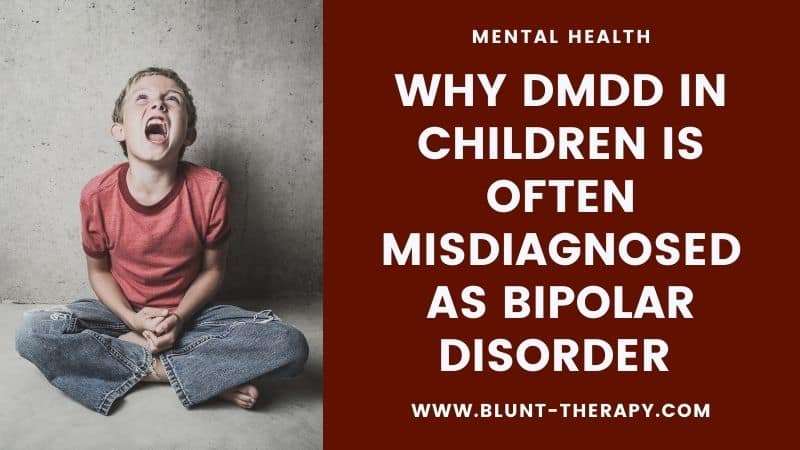Table of Contents
Affiliate link notice: As an affiliate of BetterHelp and other third-party vendors, We will receive compensation if you make a purchase using the links provided on this page. For more information, visit our disclosure page.
Last Updated on May 15, 2023 by Randy Withers, LCMHC
In the aftermath of a disaster, our instinct is to tend to visible, physical wounds. But, beneath the surface, unseen psychological injuries often occur, leaving deep, lasting imprints on our mental and emotional well-being.
These invisible wounds can be just as debilitating as physical injuries, if not more so, disrupting our sense of safety, stability, and inner peace. In fact, the World Health Organization estimates as many as 1 in 5 people struggle with depression, anxiety, and post-traumatic stress in the wake of a crisis.
In such scenarios, Psychological First Aid (PFA) emerges as a crucial lifeline, offering a compassionate and supportive response to individuals grappling with psychological distress. Frequently used by first responders, it is a powerful component of disaster response.
In this post, we’re going to talk about what Psychological First aid is, and why as a mental health professional you should be trained to use it.

Psychological First Aid: The Lifeline in a Sea of Mental Distress
In the vast and turbulent ocean of human experience, traumatic events often manifest as tempestuous storms that threaten to capsize the fragile boat of mental well-being. Amid the churning waves of shock, fear, and distress, Psychological First Aid (PFA) emerges as a lifeline – a buoyant lifesaver, tossed with precision and care to those battling the whirlpool of acute psychological distress.
Just as a lifebuoy keeps a sailor afloat in choppy waters, PFA aims to keep individuals from sinking into the depths of their trauma, offering immediate care and support to facilitate their journey towards recovery.
Psychological First Aid (PFA) is often the first line of psychosocial support provided to individuals who have been exposed to traumatic events. Its compassionate, adaptable approach is designed to mitigate acute distress and foster short and long-term adaptive functioning.
And it is effective, too. A study published in the Journal of Mental Health Counseling found that PFA can effectively reduce initial post-traumatic stress symptoms and feelings of grief.
In essence, PFA serves as a bridge to recovery, helping people regain control and start their healing journey. Here are some situations where Psychological First Aid would be especially beneficial:
- Natural Disasters: After events such as earthquakes, hurricanes, floods, or wildfires, people often experience shock, fear, and grief.
- Violence or Abuse: Victims of domestic violence, sexual assault, or other forms of abuse can greatly benefit from PFA.
- Terrorist Attacks or War: In the aftermath of terrorist attacks or in war-torn areas, PFA can help survivors deal with the traumatic stress and begin the healing process.
- Serious Accidents: Individuals involved in severe accidents, like car crashes or workplace incidents, often experience immediate distress.
- Public Health Emergencies: During pandemics or widespread disease outbreaks, people can experience significant anxiety and distress.
- Mass Shootings: In the aftermath of mass shootings, survivors, families, and communities often grapple with a myriad of intense emotions – fear, anger, grief, and more.
- Workplace Violence: Instances of violence in the workplace can leave employees feeling unsafe, stressed, and traumatized.
In all these scenarios, the goal of PFA is to reduce distress, assist with current needs, promote flexible coping, and encourage adjustment. It’s important to remember that PFA is not professional therapy – it’s an immediate, supportive response provided by both professional and non-professional helpers.
Key Takeaways
- PFA provides immediate emotional support and practical help post-trauma, serving as a mental health first response.
- PFA operates on principles promoting safety, calmness, efficacy, connectedness, and hope, with eight key components guiding its implementation.
- Administering PFA requires empathy, avoiding assumptions, and offering practical support and resources.
- PFA uses emotional support, cognitive, and behavioral techniques to ensure stability and beneficial actions.
- PFA can be applied in a wide range of traumatic situations, mitigating acute distress and fostering adaptive functioning.
Defining Psychological First Aid: A Mental Health Lifesaver
While the term “first aid” typically conjures images of bandages, antiseptics, and physical injury, Psychological First Aid extends the concept into the realm of mental health. However, it’s essential to understand that PFA is not a treatment per se, like psychotherapy or medication. Instead, it operates as a kind of emotional stabilizer, a first response to trauma aimed at mitigating acute distress and preventing further psychological harm.
Psychological First Aid functions as a triage system for mental health, serving to assess, stabilize, and direct individuals towards the necessary support systems. Its primary goal is to promote an environment of safety, instill calm, and provide a sense of self-efficacy and hope. PFA offers a compassionate, respectful, and non-intrusive approach to care, ensuring immediate practical assistance while respecting the individual’s wishes and autonomy.
But PFA does more than just provide immediate comfort; it empowers individuals. By equipping them with the tools and resources to navigate their distress, PFA encourages individuals to become active participants in their recovery journey. It’s not just about surviving the storm; it’s about learning to sail through it.
The Role of Mental Health Professionals in Psychological First Aid
Mental health professionals play a pivotal role in the provision of PFA. As therapists, counselors, psychologists, or psychiatrists, our roles often extend beyond the confines of a therapy room. We don’t just provide treatment; we serve as lighthouses in the storm – steadfast, illuminating, guiding those lost at sea towards the shores of safety.
In the context of PFA, mental health professionals act as the calm amidst the chaos. We provide reassurance when the world seems uncertain, a sense of stability when everything feels unstable, and a beacon of hope when despair threatens to overwhelm. Our job is not to take control of the ship but to help those struggling regain control of their vessel, equipping them with the skills and resilience needed to navigate their way back to calm waters.
In this journey, empathy, patience, and respect are our compass. We listen without judgment, acknowledge the pain without amplifying it, and guide without imposing direction. We understand that every individual’s response to trauma is unique, and so we tailor our approach accordingly, offering personalized care that respects each person’s experience, needs, and coping mechanisms.
Psychological First Aid is not just a set of techniques or strategies. It’s a philosophy of care that prioritizes empathy, empowerment, and humanity. As mental health professionals, we don’t just administer PFA; we embody it, reflecting its principles in our approach to care and in our interactions with those we aim to help.
The 5 Psychological First Aid Principles: Building a Foundation
When it comes to providing Psychological First Aid (PFA), we must have a solid foundation to build upon. The principles of PFA are the bedrock of this foundation, guiding our actions and shaping our approach.
Principle 1: Promote Safety
Ensuring safety is the first principle of PFA and it serves as the cornerstone of all our interactions. This involves both physical safety, ensuring the individual is free from immediate harm, and psychological safety, creating an environment where the person feels secure, supported, and comfortable expressing their feelings.
An individual must feel safe before they can start to process their experiences and embark on their journey towards healing.
Principle 2: Foster Calmness
Amidst the whirlwind of emotions that often follow a traumatic event, fostering calmness can feel like finding the eye of a storm. This principle is about helping the individual manage their immediate reactions, reduce their distress, and begin to regain a sense of control. Techniques might include focused breathing, grounding exercises, or simply offering a calm, comforting presence.
Our aim is to help the individual find some stillness amidst the turbulence, creating a quiet space where healing can begin.
Principle 3: Enable Self and Collective Efficacy
When a person is thrown into the aftermath of a traumatic event, they may feel powerless and overwhelmed. This principle is about rekindling their belief in their ability to cope, to take effective action, and to influence their own recovery.
We aim to help the individual tap into their inherent strengths and resilience, encouraging them to take an active role in their healing journey. We also promote collective efficacy, highlighting the power of community support and shared experience.
Principle 4: Instill Connectedness
Traumatic experiences can often leave a person feeling isolated and alone. This principle is about bridging that gap of isolation, helping the individual reconnect with their social support networks and reminding them they are not alone in their experience.
We encourage the individual to lean on their loved ones, to seek support from their community, and to find comfort in shared experiences. We aim to cultivate a sense of belonging and connectedness, reinforcing the notion that we heal together.
Principle 5: Infuse Hope
Trauma can cast a long shadow over a person’s life, but the final principle of PFA is about lighting a beacon of hope amidst that darkness. It’s about acknowledging the pain and suffering, but also pointing towards the possibility of recovery and growth.
We aim to infuse a sense of hope into every interaction, reminding the individual of their inherent resilience, their strength, and their capacity to heal. We strive to be the torchbearers of hope, illuminating the path towards healing and guiding the individual along their journey.
In essence, these principles of Psychological First Aid form a roadmap, guiding us through the complex terrain of trauma response. They remind us of our purpose and ground us in our practice. And as we navigate this path, these principles serve as our compass – pointing us towards safety, calmness, empowerment, connectedness, and hope.
8 Key Components of Psychological First Aid
Like a complex piece of machinery, the Psychological First Aid model operates through a series of interlocking components. Each plays a distinct yet complementary role, working together to facilitate a comprehensive, holistic approach to mental health support following trauma.
Component 1: Contact and Engagement
The first step in PFA is initiating contact and engaging the individual in distress. This process is more than just an introduction; it’s about establishing trust, building rapport, and creating a safe space for the person to share their experiences. It involves an approach of respect, compassion, and patience, acknowledging the individual’s autonomy and letting them set the pace of the interaction.
The goal here is to make the person feel seen, heard, and valued.
Component 2: Safety and Comfort
The second component focuses on promoting safety and comfort. This involves assessing the person’s immediate physical safety, ensuring they are free from harm, and addressing any urgent basic needs like food, water, and shelter. In parallel, we work to enhance psychological comfort, providing reassurance, reducing distress, and helping the person transition from a state of alarm to a state of calm.
This might involve simple gestures like providing a warm blanket, a cup of tea, or just a comforting presence.
Component 3: Stabilization
Stabilization is crucial for individuals who may be disoriented, overwhelmed, or in a state of acute distress. This component involves helping the person regain a sense of control and equilibrium. Techniques might include grounding exercises, guided breathing, or other relaxation techniques that can help manage intense emotional reactions.
Remember, the goal is not to rush or force a return to normalcy but to provide a stabilizing anchor amid the storm of trauma.
Component 4: Information Gathering
Next, we gather information about the individual’s current needs and concerns. This is not an interrogation, but a gentle exploration of the person’s experiences, perceptions, immediate needs, and available resources. We assess their emotional state, physical health, and social supports, always respecting their readiness to share and their right to withhold information.
The goal here is to understand the person’s unique situation, strengths, and challenges to tailor our support accordingly.
Component 5: Practical Assistance
Practical assistance involves helping the person address immediate needs and concerns related to the traumatic event. This might include assistance with accessing basic resources, navigating bureaucratic systems, or managing practical tasks that can seem overwhelming in the wake of trauma.
By providing this tangible support, we not only address immediate needs but also help restore a sense of self-efficacy and control.
Component 6: Connection with Social Supports
Connection with social supports is a vital component of PFA. Humans are social creatures, and our relationships can be powerful sources of comfort, strength, and resilience. This component involves helping the individual identify, access, and leverage their social support network. This could include family, friends, community groups, or professional services.
The goal is to ensure the person is not navigating their distress alone but has a supportive community surrounding them.
Component 7: Information on Coping
Knowledge is power, and understanding how to cope with distress is a key part of recovery. This component involves providing the person with information about common reactions to trauma, effective coping strategies, and potential stressors to avoid.
It’s about equipping the individual with the tools and knowledge they need to navigate their journey towards healing.
Component 8: Linkage with Collaborative Services
Finally, PFA involves linking the person with other appropriate services and supports in their community. This might include mental health services, medical services, social services, or community groups. The aim is to ensure a smooth transition from immediate crisis support to long-term recovery and resilience-building resources.
This linkage not only provides a continuity of care but also ensures that the individual has access to a broad spectrum of supports tailored to their unique needs and circumstances.
Remember, providing Psychological First Aid is not a linear process but a responsive one. As mental health professionals, we are called to be adaptable, sensitive, and intuitive, adjusting our approach based on the evolving needs and responses of the individual. It’s a dance, not a march – a process of attunement, adjustment, and alignment with the person’s rhythm of recovery.
The eight components of PFA are not just a checklist of tasks to be completed. Rather, they are guideposts, illuminating our path as we navigate the challenging terrain of trauma and distress.
Effective Techniques for Providing Psychological First Aid
Psychological First Aid (PFA) is a nuanced practice, involving a blend of emotional, cognitive, and behavioral techniques. By skillfully weaving together these different threads, we can create a comprehensive support tapestry that addresses the complex needs of those affected by trauma. Let’s delve into these different categories of techniques and explore how they contribute to effective PFA.
Emotional Support Techniques: Ensuring Emotional Stability
Emotional support techniques are the heart of PFA, helping individuals navigate the turbulent sea of emotions that often follows a traumatic event. These techniques are geared towards creating a safe, empathetic space where individuals can express their emotions, feel heard, and begin the process of emotional healing.
Active Listening: Active listening is a cornerstone of emotional support. It involves fully focusing on the individual, showing empathy, and providing non-judgmental responses. By listening deeply, we can validate their feelings, reassure them that their reactions are normal, and help them feel understood and supported.
Comforting Presence: Sometimes, the most powerful emotional support we can offer is simply being there, providing a comforting, calming presence amidst the chaos. This involves using a gentle tone of voice, open body language, and offering reassuring words when appropriate.
Emotional Regulation Techniques: Encourage the use of emotional regulation techniques such as deep breathing, mindfulness, or progressive muscle relaxation. These techniques can help individuals manage intense emotions, reduce distress, and regain a sense of calm and control.
Cognitive Techniques: Sharpening the Mind
While emotional support addresses the heart of the trauma response, cognitive techniques target the mind. These techniques aim to help individuals understand their experiences, manage distressing thoughts, and cultivate a hopeful, proactive mindset.
Psychoeducation: Providing clear, accurate information about trauma and its impacts can help individuals understand their experiences and normalize their reactions. This can reduce fear and uncertainty, and empower individuals to take an active role in their recovery.
Cognitive Reframing: This involves helping the individual identify and challenge distressing thoughts, and reframe them in a more balanced, constructive way. This can reduce emotional distress and foster a more hopeful, resilient outlook.
Problem-Solving: Encourage the individual to identify problems related to the trauma, brainstorm potential solutions, and take proactive steps towards resolving these issues. This can foster a sense of control and efficacy, and reduce feelings of overwhelm and helplessness.
Behavioral Techniques: Modifying Actions for Better Outcomes
Behavioral techniques focus on actions – what individuals can do to manage their distress, enhance their well-being, and promote recovery. These techniques are about translating emotional stability and cognitive clarity into tangible actions that foster healing.
Self-Care Encouragement: Encourage the individual to engage in self-care activities that promote physical well-being, relaxation, and emotional balance. This might involve regular exercise, balanced nutrition, adequate sleep, and relaxation techniques such as yoga or meditation.
Social Connection: Facilitate the individual’s connection with their social support networks. Encourage them to reach out to loved ones, share their experiences, and seek support. Also, help them identify community resources and support groups that could provide additional assistance.
Linkage with Services: Assist the individual in connecting with appropriate services for ongoing support, such as mental health services, medical care, or community resources. This can ensure continuity of care and provide the individual with a comprehensive support network for their recovery journey.
In essence, effective Psychological First Aid is a symphony of emotional, cognitive, and behavioral techniques. Each technique plays a critical role, contributing its unique notes to the overall harmony of support. By mastering these techniques and skillfully orchestrating them in response to the individual’s unique needs, we can provide compassionate, effective aid that fosters healing, resilience, and hope.
In addition to these specific techniques, it’s important to remember that the foundation of effective PFA is the genuine human connection. Beyond all the strategies and techniques, it’s our empathy, kindness, and unwavering commitment to support that makes the most significant difference.
Consider the following three factors:
Respect for Individual Differences: Acknowledge that everyone’s experience of trauma is unique. Some may want to talk about their experiences, while others may not. Some may respond well to certain techniques, while others may prefer different approaches. Be flexible, patient, and responsive to the individual’s needs and preferences.
Cultural Sensitivity: Be aware of and respect cultural differences in understanding and responding to trauma. Adapt your approach to align with the individual’s cultural values, beliefs, and practices.
Empowerment: Encourage the individual to take an active role in their recovery. Rather than simply doing things for them, empower them to take steps towards their own healing. This can foster a sense of control and efficacy, and enhance their resilience and hope.
Ultimately, Psychological First Aid is about more than just providing immediate support in the aftermath of trauma. It’s about planting the seeds of resilience and recovery, and nurturing these seeds with empathy, understanding, and skillful support.
Case Studies: Real-World Applications of Psychological First Aid
To better understand how Psychological First Aid (PFA) can be applied in real-world situations, let’s explore three case studies involving different types of psychological trauma: Acute Stress Disorder, Post Traumatic Stress Disorder, and grief and loss.
Case Study 1: Managing Acute Stress Disorder
The Situation: John, a 30-year-old man, was involved in a severe car accident. Although physically uninjured, he began exhibiting signs of Acute Stress Disorder, including recurrent nightmares, feelings of disconnection from reality, and avoidance of anything related to driving or cars.
The PFA Response: A mental health professional using PFA began by establishing contact and engagement with John, providing a safe space for him to express his feelings. They used active listening to validate his emotional distress and reassure him that his reactions were normal given the traumatic event he had experienced.
The professional provided information about Acute Stress Disorder, helping John understand his symptoms. Together, they worked on cognitive reframing techniques to manage distressing thoughts and encourage a more balanced perspective. John was encouraged to gradually face his fears, starting with simple actions like walking near a parked car.
This step-by-step exposure, combined with emotional regulation techniques like deep breathing, helped John regain a sense of control and reduce his fear.
Case Study 2: Dealing with PTSD
The Situation: Maria, a veteran, had been living with undiagnosed Post-Traumatic Stress Disorder (PTSD) since returning from deployment. She was experiencing flashbacks, hyperarousal, and was socially withdrawn.
The PFA Response: In Maria’s case, the PFA practitioner focused on building a strong rapport and ensuring her safety and comfort. They provided psychoeducation about PTSD, helping Maria understand her symptoms and normalizing her reactions.
Emotional regulation techniques were taught to help Maria manage her anxiety and hyperarousal. The practitioner worked with Maria on cognitive techniques, challenging and reframing distressing thoughts about her experiences. Maria was connected with social supports, including veteran support groups and PTSD treatment programs, ensuring that she had ongoing support beyond the immediate PFA intervention.
Case Study 3: Handling Grief and Loss
The Situation: Emma, a 45-year-old woman, recently lost her husband to cancer. She was struggling with intense grief and feelings of isolation.
The PFA Response: The mental health professional engaged Emma in a gentle, empathetic manner, acknowledging the depth of her grief. They provided a comforting presence, allowing Emma to express her feelings freely.
They offered practical assistance, helping Emma navigate the logistical challenges that often follow a loved one’s death. Emma was connected with grief counseling services and bereavement support groups for ongoing support. The professional also helped Emma identify self-care activities and simple daily routines to bring structure and normalcy in her life.
These case studies illustrate the flexibility and versatility of PFA. It’s not a one-size-fits-all approach, but a flexible tool that can be adapted to meet the unique needs of individuals dealing with various forms of psychological trauma.
The Do’s and Don’ts of Psychological First Aid
Effective Psychological First Aid (PFA) is a delicate balance of what to do and what not to do. Understanding this balance is crucial in ensuring we provide appropriate, compassionate, and effective support. So, let’s explore some of the key do’s and don’ts in providing PFA.
The Do’s of PFA:
Do Listen Actively: Active listening is at the heart of PFA. It involves being fully present, showing genuine interest, and responding empathetically to the individual’s experiences and emotions.
Do Respect Their Experience: Each person’s experience of trauma is unique. Respect their experience and their reactions, acknowledging the impact of the event without judgment or minimization.
Do Provide Accurate Information: Provide clear, accurate information about the situation, the normal reactions to trauma, and the steps towards recovery. Transparency helps to alleviate uncertainty and fear.
Do Encourage Self-Care: Encourage the individual to engage in self-care activities that promote relaxation, rest, and physical well-being. Reinforce the importance of balanced nutrition, regular exercise, and adequate sleep.
Do Connect Them with Support Systems: Help the individual reconnect with their existing support networks and, if necessary, assist them in building new ones. Remember, social connection is a powerful aid in the recovery process.
The Don’ts of PFA:
Don’t Force the Conversation: While it’s important to provide an open space for the individual to share their experience, don’t push them to talk if they’re not ready. Respect their pace and their process.
Don’t Make Promises You Can’t Keep: It’s crucial to be honest and reliable. Avoid making promises about the recovery process that you can’t guarantee.
Don’t Ignore Your Own Self-Care: Providing PFA can be emotionally draining. Be sure to prioritize your own self-care to avoid burnout and maintain your ability to provide effective support.
Don’t Diagnose or Label: PFA is not about diagnosing mental health conditions or labeling the individual’s reactions. It’s about providing immediate, compassionate support and facilitating connection with further help if needed.
Don’t Neglect Cultural Sensitivity: Be aware of cultural differences in understanding and responding to trauma. Respect the individual’s cultural background and adapt your approach accordingly.
By keeping these do’s and don’ts in mind, we can ensure that our Psychological First Aid is both compassionate and effective.
Final Thoughts
As we wrap up this deep dive into Psychological First Aid (PFA), it’s clear to see the pivotal role this practice plays in the world of mental health. In the aftermath of trauma, PFA serves as a vital lifeline, helping individuals navigate the turbulent waters of distress and steer towards the shores of recovery.
The principles and components of PFA that we’ve explored are not just theoretical concepts but actionable strategies that can truly make a difference in real-world scenarios. From promoting safety and fostering calmness to enabling self-efficacy and infusing hope, each principle, each technique forms a piece of the puzzle that helps restore mental equilibrium in times of crisis.
However, the essence of PFA goes beyond techniques and strategies. At its heart, it’s about human connection, empathy, and kindness. It’s about standing by those who are hurting, not as distant professionals, but as fellow human beings who genuinely care.
As mental health professionals, our work in PFA extends beyond the immediate aftermath of trauma. Each person we support, each life we touch, adds to a ripple effect, contributing to a healthier, more resilient society. Indeed, through PFA, we can help turn the tide of trauma, transforming it from a destructive force into a catalyst for growth, healing, and hope.
FAQ about Psychological First Aid
What makes psychological first aid distinct from traditional first aid?
Psychological first aid and traditional first aid differ primarily in their focus areas. While the latter concentrates on offering immediate physical care during emergencies and injuries, psychological first aid emphasizes emotional and psychological support for individuals in distress. It’s a compassionate approach, employing active listening, empathy, and actions designed to make individuals feel secure and connected.
Although different, these two forms of aid can complement each other, and integrating psychological first aid into emergency response plans can help individuals manage the emotional repercussions of traumatic events.
What are typical indications that someone may need psychological first aid?
Individuals may need psychological first aid if they are in shock, feeling overwhelmed, helpless, or grappling with intense emotions. Physical symptoms, such as rapid heartbeat, shaking, or trouble breathing, can also indicate the need for psychological aid.
Providing this type of aid with empathy and understanding can help individuals navigate traumatic events and mitigate the risk of future mental health issues. If you or someone else is displaying these symptoms, professional help should be sought immediately.
What are the best practices for offering psychological first aid to someone in need?
When offering psychological first aid, approaching the individual calmly and empathetically is crucial. Active listening and validation of their feelings, coupled with providing a safe and comfortable environment for self-expression, are key. Refrain from making assumptions or judgments about their experiences, instead, offer practical support and resources.
Adhering to these best practices can ensure the effectiveness of psychological first aid for those in need.
Are there any potential risks or challenges associated with providing psychological first aid?
Providing psychological first aid can indeed be emotionally demanding for the mental health professionals involved. Moreover, cultural or language barriers might pose challenges during assistance. It’s imperative to avoid making assumptions about a person’s experiences or needs, and to respect individual differences. Insufficient training or supervision can also risk both the mental health professional and the person needing help.
Thus, ensuring mental health providers have the right training and support is critical to deliver effective psychological first aid while minimizing potential risks and challenges.
Can psychological first aid be offered remotely, such as through teletherapy or phone counseling?
Absolutely, psychological first aid can be effectively provided remotely via teletherapy or phone counseling. This remote care model can prove invaluable during crisis periods or when in-person services are unfeasible.
Nonetheless, mental health professionals must adjust their approach to deliver efficient remote psychological first aid. Establishing a secure and confidential environment is crucial for clients to feel comfortable and supported when sharing their thoughts and feelings remotely.
How can mental health professionals use psychological first aid in their existing practices?
Mental health professionals can integrate psychological first aid into their current practices by pinpointing and addressing the immediate needs of clients in crisis. This entails using active listening skills for emotional support and validation, and offering practical help like securing housing or medical care.
Additionally, professionals can guide their clients on coping strategies and available resources for continued support. By incorporating these techniques, mental health professionals can better assist their clients through challenging times.
Online Psychological first Aid Courses and Resources
- Psychological First Aid Online | SAMHSA This course is an interactive course in which the participant learns about PFA by taking on the role of a provider after a disaster. The course includes expert tips, videos, and activities in support of learning.
- Psychological First Aid (PFA) Online Training – PTSD: National Center for PTSD3: This course is for individuals new to disaster response who want to learn the core goals of PFA, as well as for experienced practitioners who want a review of PFA. PFA Online also offers a Learning Community where participants can share experiences, receive guidance, and obtain resources.
- Psychological First Aid Education – New York State Office of Mental Health This course is offered by the Department of Health through the Learning Management System (LMS). It covers the basic principles and techniques of PFA.
- Psychological First Aid – Johns Hopkins University This course teaches learners how to provide PFA to people in an emergency by employing the RAPID model: Reflective listening, Assessment of needs, Prioritization, Intervention, and Disposition.
- Psychological First Aid – University of Minnesota This course introduces learners to the concepts and skills of PFA, including how to assess needs, provide practical care, comfort and support, and link people with appropriate resources.
Research on Psychological First Aid
- Norris, Fran H., et al. “Psychological First Aid: Rapid proliferation and the search for evidence.” Psychological Trauma: Theory, Research, Practice, and Policy 4.3 (2012): 231-243.
- Hobfoll, Stevan E., et al. “A systematic review of the effectiveness of psychological first aid for survivors of disasters and other traumatic events.” Psychological Trauma: Theory, Research, Practice, and Policy 6.3 (2014): 239-257.
- Pfefferbaum, Bob, et al. “Psychological first aid for children and adolescents: A review of the literature.” Psychological Trauma: Theory, Research, Practice, and Policy 6.3 (2014): 258-271.
- Norris, Fran H., et al. “Psychological first aid for older adults: A review of the literature.” Psychological Trauma: Theory, Research, Practice, and Policy 6.3 (2014): 272-285.
- Norris, Fran H., et al. “Psychological first aid for people with disabilities: A review of the literature.” Psychological Trauma: Theory, Research, Practice, and Policy 6.3 (2014): 286-299.
- Norris, Fran H., et al. “Psychological first aid for victims of mass violence: A review of the literature.” Psychological Trauma: Theory, Research, Practice, and Policy 6.3 (2014): 300-313.
- Norris, Fran H., et al. “Psychological first aid for natural disasters: A review of the literature.” Psychological Trauma: Theory, Research, Practice, and Policy 6.3 (2014): 314-327.










very nice well done thank you
Thanks for the feedback!